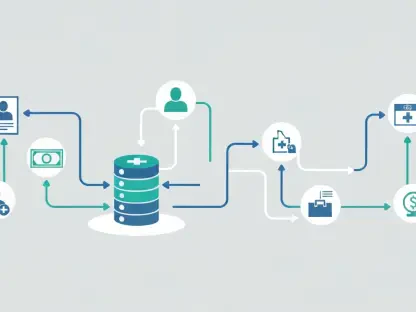The financial industry is navigating a complex regulatory landscape where client lifecycle management (CLM) plays a critical role in maintaining compliance. Financial institutions are facing growing pressures to modernize their CLM processes to align with increasing regulatory demands and client expectations for seamless onboarding and service. The shift from manual, siloed systems to automated and integrated frameworks is becoming imperative. Platforms such as KYC Portal CLM exemplify this transformation by constructing ecosystems ready to adapt swiftly to regulatory changes. A key concern is the fragmented nature of compliance operations, which often results in onboarding delays, data inconsistencies, and complications in audit processes, potentially threatening compliance. Addressing these silos is essential for future-proofing CLM operations, ensuring they remain responsive and effective in the face of evolving regulatory landscapes.
The Shift from Manual to Automated Systems
With outdated processes behind, the transition to API-driven CLM systems reflects a broader shift towards automation in financial compliance. Automation allows financial institutions to implement rule-based workflows for various processes, including onboarding and due diligence, greatly reducing human error. This heightened efficiency maintains robust and transparent audit trails, supporting compliance effortlessly. KYC Portal CLM stands out in the industry by connecting compliance tasks into a single, unified workflow through API integrations. This approach facilitates real-time data sharing across systems, eliminating repetitive tasks and curbing inefficiencies. By integrating compliance activities into a streamlined process, financial institutions can adapt to regulatory changes more rapidly and effectively. Furthermore, automation not only enhances processing speeds but also supports a more customer-centric service approach, enabling institutions to better meet the diverse needs of their clients.
Real-Time Compliance Monitoring and Customization
API-driven CLM systems offer a significant advantage with their capability for real-time compliance monitoring and customization, all without the need for technical expertise. These platforms provide no-code workflow automation, enabling institutions to adjust client journeys to their specific requirements even without extensive programming knowledge. This flexibility allows firms to cater to a broad range of client types, from individuals to large corporations, by offering a scalable solution to address diverse regulatory demands. Real-time compliance monitoring generates customized alerts automatically, ensuring swift responses to potential issues. This proactive approach not only reduces risks but also enhances the institution’s ability to offer tailored services. Industry consensus strongly suggests that moving towards API-driven CLM is no longer just beneficial but essential for staying abreast of rapidly changing compliance requirements. Financial institutions that adopt these technologies are better equipped to handle regulatory complexities with agility and efficiency. Embracing API-driven CLM solutions facilitates seamless client experiences and robust data management.









